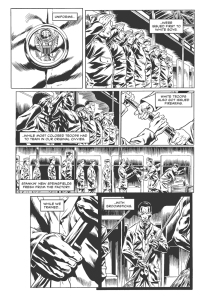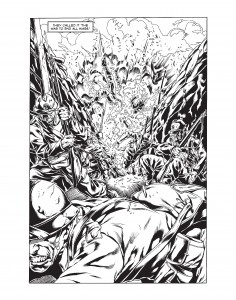As June turns into July and the second half of 2014 arrives, I suppose now is a natural time to pause for a moment to reflect upon this year's releases so far. Unlike previous years, I have made a greater effort to review the year's releases soon after I read them. I have a handy post set aside for cataloging these releases, with links to the reviews as I write them. To date, I have written 31 reviews of books released in the US in 2014 (and have written another 21 reviews for pre-2014 releases, but that is beside the point).
There are some interesting patterns that I've noticed about the books I've read/reviewed so far. One is that while there are still more male than female writers read/reviewed, the number of books by women that I've read this year that I've mentally bookmarked to be contenders for my year-end Top 25 is roughly equal with the men. There are also over 1/3 representation by peoples of color in my review list and almost uniformly, these are among the strongest works that I've reviewed so far this year. Almost as many, 10, are written by immigrants or the children of immigrants.
One slightly dismaying fact: only two of the 31 reviewed books are marketed solely or explicitly as genre SF/F; another two could be co-marketed as such. However, another 8-9 have qualities in common with speculative writing, so perhaps there is a strain of speculative reading in my 2014 reads that could easily have been overlooked.
Only three of the 31 reviews were of books sent to me; two of those three were sent by the author. I don't receive many review copies anymore (which is fine by me), but it is interesting to see how my reads/reviewing are influenced much more this year by what I purchase than by what others have sent me. I suspect this is showing my personal preferences much more than in years' past, when I might have included works that I wouldn't have otherwise read into my reading lists because it was something sent to me.
A few conclusions can be drawn from the releases to date:
1) There is a very strong group of works being released by immigrants/PoC. I have heard talk of similar numbers in genre fiction, but I think it is more established in lit fic that stories written from a non-WASP perspective are more visible and more popular today than in previous years.
2) The range of fictions being published is increasing, rather than decreasing, despite what one particular person might have thought about "middling" works. I do not recognize the Roth/Bellow-esque loser male bourgeois being in the ascendent in recent fictions, although he certainly hasn't faded completely.
3) Genre SF/F is not producing as many interesting speculative works as non-SF/F-labeled spec fic. This may be one of the poorest years for reading genre-marketed work that I've encountered since I begin blogging nearly 10 years ago.
4) There are several intriguing works coming out by established writers in the second half of 2014, but there are some relatively new faces whose upcoming works promise to be very appealing to me. Slightly more "genre" works, but still the majority seems to be non-SF/F-labeled.
5) This will be my most difficult year in assembling a Top 25 list, as there are already over 20 strong candidates. There is no clear-cut favorite for #1 yet as well.
And that's about it. Any observations to make at mid-year about your own 2014 reading?
There are some interesting patterns that I've noticed about the books I've read/reviewed so far. One is that while there are still more male than female writers read/reviewed, the number of books by women that I've read this year that I've mentally bookmarked to be contenders for my year-end Top 25 is roughly equal with the men. There are also over 1/3 representation by peoples of color in my review list and almost uniformly, these are among the strongest works that I've reviewed so far this year. Almost as many, 10, are written by immigrants or the children of immigrants.
One slightly dismaying fact: only two of the 31 reviewed books are marketed solely or explicitly as genre SF/F; another two could be co-marketed as such. However, another 8-9 have qualities in common with speculative writing, so perhaps there is a strain of speculative reading in my 2014 reads that could easily have been overlooked.
Only three of the 31 reviews were of books sent to me; two of those three were sent by the author. I don't receive many review copies anymore (which is fine by me), but it is interesting to see how my reads/reviewing are influenced much more this year by what I purchase than by what others have sent me. I suspect this is showing my personal preferences much more than in years' past, when I might have included works that I wouldn't have otherwise read into my reading lists because it was something sent to me.
A few conclusions can be drawn from the releases to date:
1) There is a very strong group of works being released by immigrants/PoC. I have heard talk of similar numbers in genre fiction, but I think it is more established in lit fic that stories written from a non-WASP perspective are more visible and more popular today than in previous years.
2) The range of fictions being published is increasing, rather than decreasing, despite what one particular person might have thought about "middling" works. I do not recognize the Roth/Bellow-esque loser male bourgeois being in the ascendent in recent fictions, although he certainly hasn't faded completely.
3) Genre SF/F is not producing as many interesting speculative works as non-SF/F-labeled spec fic. This may be one of the poorest years for reading genre-marketed work that I've encountered since I begin blogging nearly 10 years ago.
4) There are several intriguing works coming out by established writers in the second half of 2014, but there are some relatively new faces whose upcoming works promise to be very appealing to me. Slightly more "genre" works, but still the majority seems to be non-SF/F-labeled.
5) This will be my most difficult year in assembling a Top 25 list, as there are already over 20 strong candidates. There is no clear-cut favorite for #1 yet as well.
And that's about it. Any observations to make at mid-year about your own 2014 reading?

























